 The traditional Viking clothing differed a little bit from region to region. For instance, the Danish Viking women wore plain undergarments, while the Swedish Viking women wore pleated ones. Or leather shoes varied from England to Iceland to Norway. As the Viking settlers occupied pretty large territories and for a pretty long time, there is some diversity in the Viking Age clothes. But, in general, the fashion trends and styles were similar. We can see that from the museum exhibitions and archaeological excavations.
The traditional Viking clothing differed a little bit from region to region. For instance, the Danish Viking women wore plain undergarments, while the Swedish Viking women wore pleated ones. Or leather shoes varied from England to Iceland to Norway. As the Viking settlers occupied pretty large territories and for a pretty long time, there is some diversity in the Viking Age clothes. But, in general, the fashion trends and styles were similar. We can see that from the museum exhibitions and archaeological excavations.
Fashion is not a new thing. People have for thousands of years dressed in the best clothes they could afford. This was, of course, also true in the Viking society. In the Viking Age, clothes did not just have a practical purpose, but many of them also dressed with the intent to show the social status and to appeal to the other sex.
Unfortunately, Viking clothes are rarely being found. And when the archaeologists do find some clothes from that period, it is often just small pieces of different kind of materials, like wool and linen, which easily decay. So it can be difficult to see the patterns and figures on some of the clothes after so many years in the ground. That is why we do not just look at the pieces of clothes, but we also look at the written materials.
But small figurines can also help us understand the Viking fashion. For instance, the Valkyrie that was found in 2012 in Harby, Denmark.
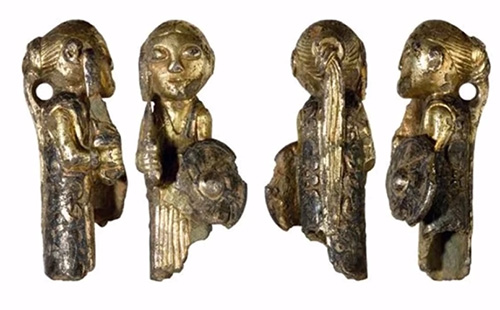
Or the figure of Freya found in 2014.
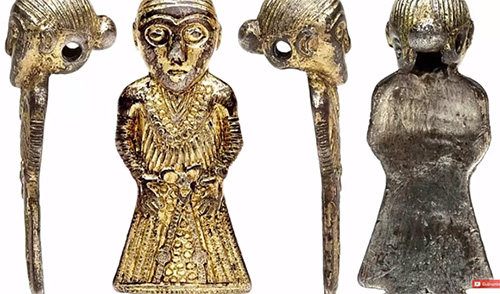
Tapestries, such as the Bayeux Tapestry in France, also gives us an insight into how the Vikings dressed.
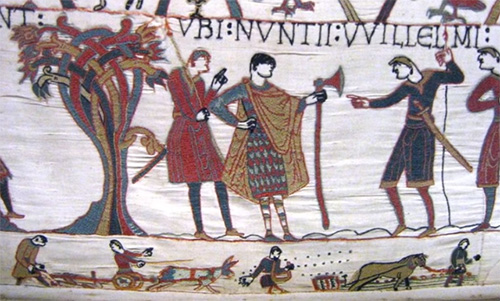
So, as you can see, we use as many relevant sources as possible to help us create a broader image of what kind of clothes they wore.
Colors and patterns
There has for a long time been the image of the Viking clothes being gray and boring. But that is not the case. They had lots of colors to choose from when they made their clothing. One of the most expensive colors in the Viking Age was red and it came from a certain plant that did not grow in Scandinavia, so it was necessary to trade for it in places like Frankia and Saxony. Some of the other colors the Vikings had available were black, yellow, blue, purple, white, and many others. So it was indeed a colorful time to be alive.
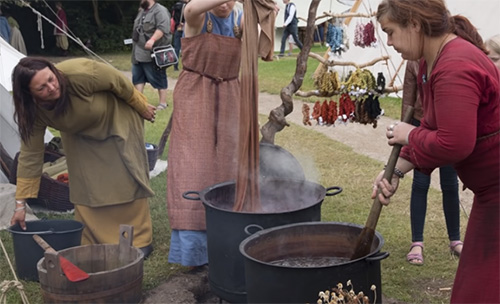
The Vikings loved to have patterns on their clothes and we do have some bits and pieces with patterns from the Viking Age. But many of the patterns that are only reconstructed today are inspired by Viking art, such as on ribbons, jewelry, rune stones, and other sources.
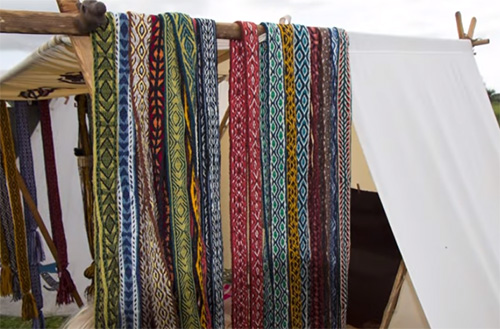

The people in the Viking Age wore the clothes in layers to keep themselves warm. And most of them wore similar clothes, with some variations depending on where they lived and what they could afford.
Men’s clothing
Most men wore a tunic as an outer garment on the upper body. Most likely, with long sleeves in the winter and short sleeves in the summer. The tunics were very long and went down to the knees. They had to pull it over the head. The tunics were dyed in one of the many colors they had available, and some of them were even decorated with patterns and symbols.
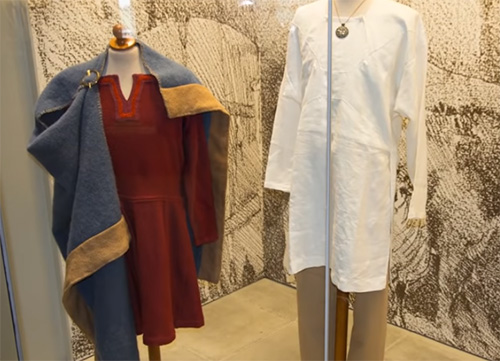
Men also wore trousers made from either linen or wool. The trousers had no pockets or elastic but they might have had a Sybil drawstring in the waistband. We do know they used a leather belt because there have been found many belt buckles in the excavations. The poor people or slaves just used a string tied around their waist.
There were, of course, variations on how the trousers looked. Some were tight and some were baggy, some of the trousers had many details and others did not.
The Viking men also wore a tunic and a pair of trousers as underwear that had no colors or patterns since no one would see them anyway. Both the tunic and trousers were most commonly made from linen. It was, however, not the cheapest option but it was the most comfortable option to use linen as underwear. The underwear made from wool would have been a cheaper option for the lower classes in the Viking society.
Men also wore leg wrappings around the legs on top of the trousers. These leg wrappings were two long narrow strips of cloth which were typically made from wool. They were wrapped around the leg from the knee and down to under the foot. The leg wrappings were not commonly used everywhere, in all of Europe. For instance, in Iceland, it was not a common practice.
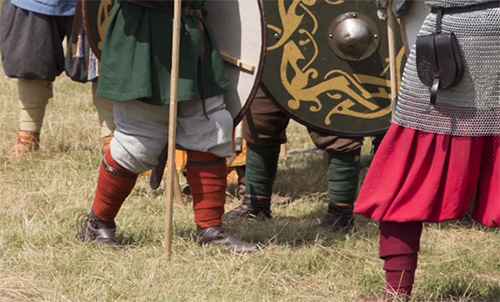
Sometimes, the Vikings also wore a simple cloak. It was not something that was very hard to make, it was simply just a large rectangular piece of linen or wool. Some of them chose to dye the cloak – maybe to show the status or just to have a pretty cloak in their favorite color.
A Viking cloak was very practical in many ways and they could use it to hide the weapons beneath it. However, the main purpose of the cloak was, probably, to help them stay warm.
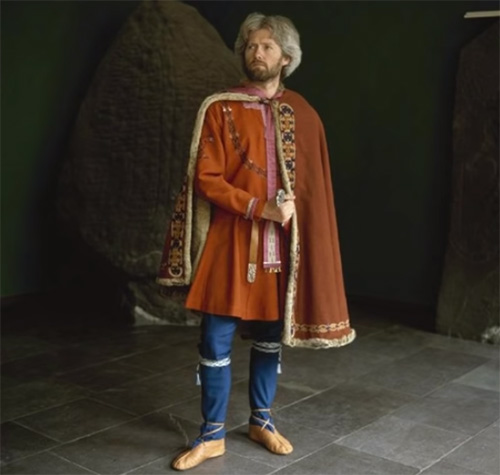
There might have been variations in how the cloak was made. Some could have been better insulated, which made them warm and gave them more shelter from the cold wind. Other cloaks might have been a light version so they could have been used during the spring and summer when the cloaks were still practical not just for staying warm in the evenings but also to give them a little cover from the rain.
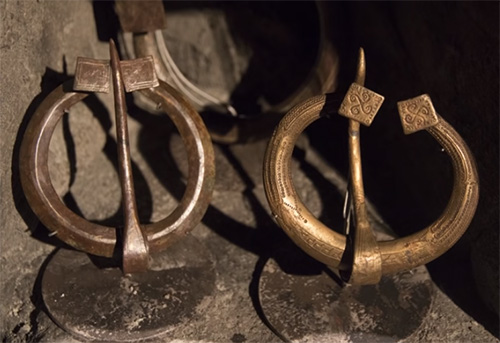
The cloak was attached to the clothes with a brooch. There have been found many of them, with various designs, made from different materials.
Women’s clothing
If we take a look at the women's clothing in the Viking Age, we can see that the materials to make the clothes were the same as for male clothing.
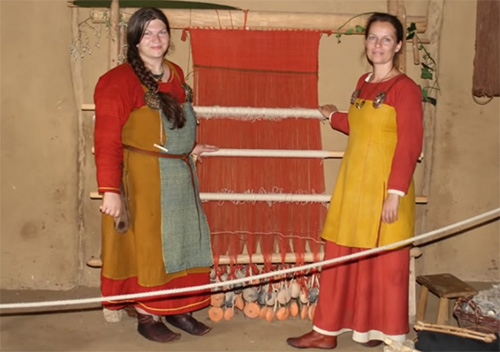
The most common outfit for women was an ankle-length linen underdress with a strap-dress over it. And just like the men’s, there were no pockets in the women's clothing. The strap-dress was shorter in length and made from wool.
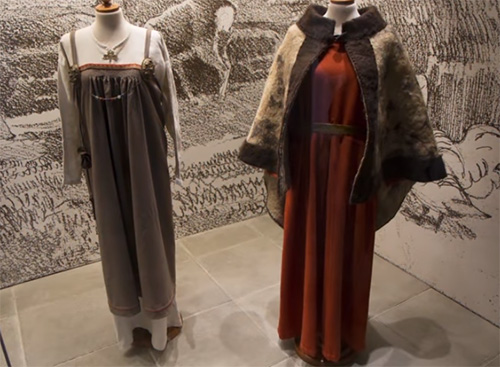
The shoulder straps were fastened to the underdress with two brooches which were either made from iron or bronze. And in very rare instances, they were made from gold.
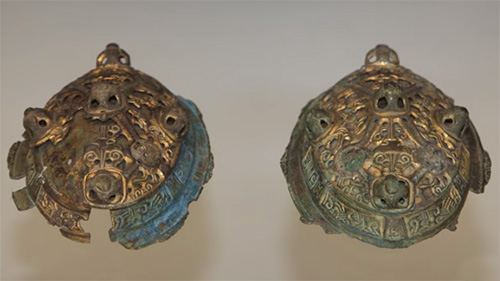
Between the two brooches, women had either beads, amber, or other jewelry as decorations. But women would also sometimes hang useful items there, such as keys, needles, scissors, or even a whetstone.

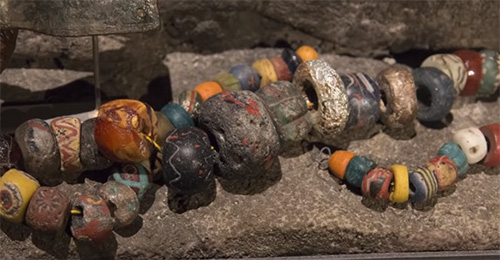
The style of female outfits was not the same in every Viking community. For example, the Danish Viking women preferred plain undergarments, while the Swedish Viking women wore pleated ones.
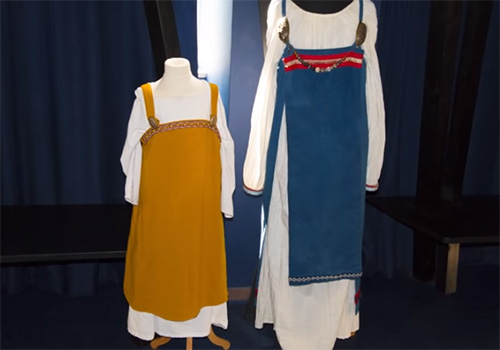
Some women would also wear a knotted kerchief as a head covering. But it is uncertain if it was an everyday thing or just something for special occasions. It could have been used for practical purposes, such as in preventing the hair from getting into the food, because we have to remember it was mostly women who prepared the meals.
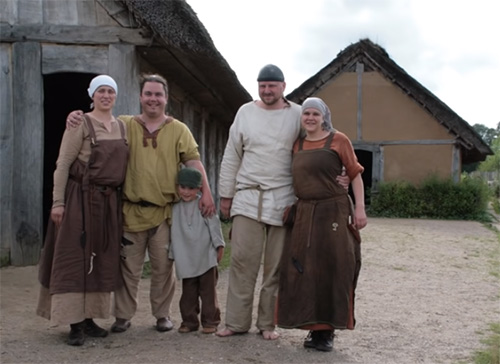
When the weather was a bit chilly, the women had an ankle-length outer garment, which she wore over her dress. But women also used cloaks, which was probably more common.
The front of the outer garment did not have any buttons but they used a tri-lobed brooch to close it.
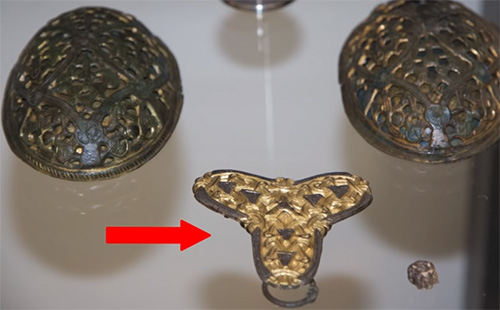
This particular tri-lobed brooch was thought originally to be a women's accessory, but it was used by men or, more accurate, it was used by the warriors. The warriors used the tri-lobed brooch as a leather strap divider – the leather strap was wrapped around one of the shoulders and then attached to a belt, so the warriors could hang a weapon on the belt, for instance, an axe. But what started as an accessory for men and a warrior's symbol, changed with time into women's fashion.
Silk was also available for the Vikings. But it was very expensive and, most likely, only some rich people could afford to buy it. Clothes made from silk was seen as a status symbol because it was imported from as far away as Constantinople in the Byzantine Empire.
Viking accessories
You might think the Vikings sat around the fire at night and knitted a pair of socks for their loved ones so they could keep the feet warm. But while they might have made socks for their loved ones, the Vikings did not need the socks. They used an ancient technique called “needle-binding” where you use a large needle to tie the yarn – in other words, knot the yarn together. This might sound like a slow way to do it, but it actually made the socks nearly indestructible and they would last for many, many years.
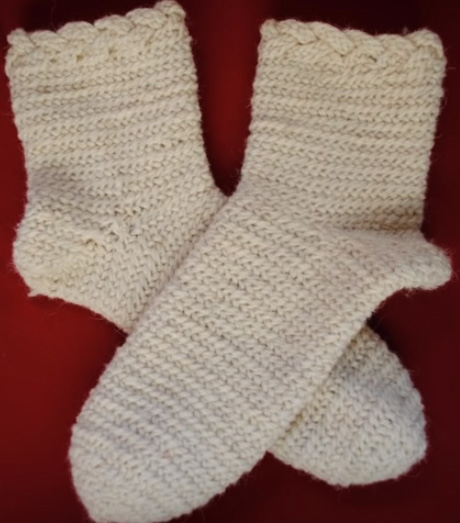
When they were spending time outside, the people would keep themselves warm by putting on a hood that covered their head and shoulders or a cap, scarf, and mittens. The hoods were typically made from pieces of fabric and the caps, scarves, and mittens were typically made from wool using the needle-binding method. However, the mittens were also made from animal skin (such as sheepskin) and they could even have been made from fur – at least if they had silver coins for it.
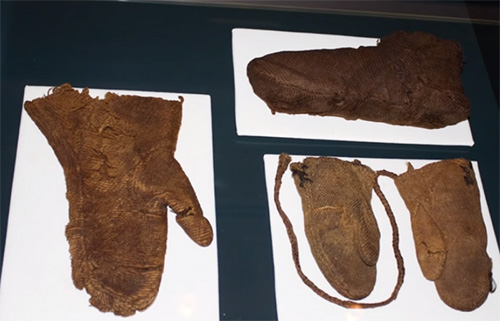
Some people did, however, struggle to keep warm in winter and not everyone could afford a cap or mittens or even a good pair of socks. The poor people and slaves in the Viking society would put hay or moss into their shoes to keep the feet warm. In Scandinavia, it does get very cold and these things are, of course, not enough.
The Vikings also had coats and jackets made from wool. They have, however, mostly been found in the eastern part of the Northland, so we cannot say for certain that they were widespread throughout all the Nordic countries.
The Vikings loved to walk around in a good pair of shoes, and some of these shoes were quite unique compared to how we make them today. There have been found many shoes from the Viking Age, and the reason for this is because the shoes did not last that long and got thrown into the trash. Some of the Vikings might even have been purchasing shoes a couple of times a year. But not all of the Viking shoes are made in the same way and they were definitely not all made in the same style and fashion. However, all of them were made from leather.
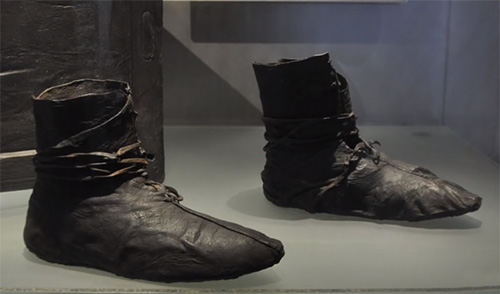
If we take a look at the shoes made by the Viking settlers in York, England, you will see how different the styles could be. Many people from the Viking Age were hard workers, so it was important to have shoes that were practical, instead of shoes that were just made to look pretty. Most of the shoes that have been found during the excavations in York are shoes that were closed with stitches from inside of the shoe. It sounds a bit strange for us today. But it must have been more practical and comfortable to work in shoes like that.
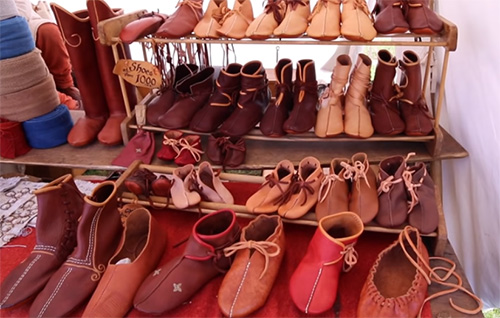
The Viking shoes had either buttons or laces; when the shoes had laces, they went around the foot and below the ankle on the foot – to avoid putting on too much pressure on the sensitive parts of the foot. The laces were typically attached to the shoe with strips of leather.
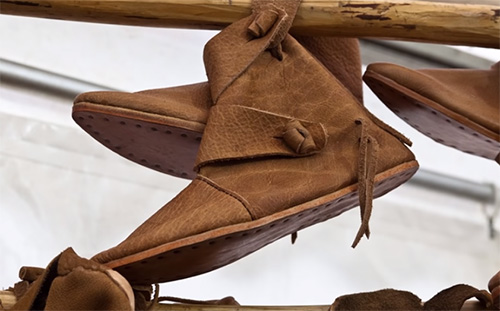
The people also wore boots in the Viking Age and some of them had heels. However, it is unlikely that boots with heels were work boots and were, probably, mostly worn by either the merchants or the upper class. The boots were usually ankle-high and it was very rare to see them any higher. And just like the shoes, the boots had either buttons or laces.
Both men and women used handbags in the Viking Age. The handbag would hang on the belt and some people might even have had two handbags on the belt so they could divide the belongings. Some handbags might have had small tools in them and others might have had silver coins. However, it was probably most likely that they only had one handbag on the belt and might have used a pouch for coins or other bits and pieces.
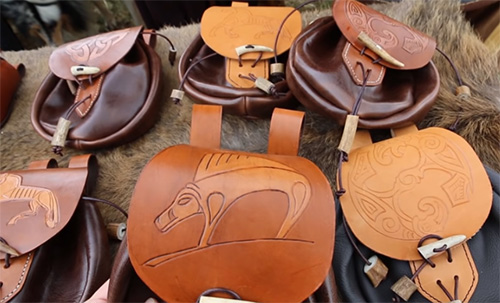
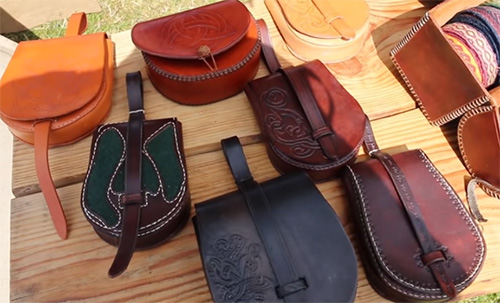
Not only did handbags hang on the belt but also the axe and knife and other useful items that were very handy to have within reach.
The belts in the Viking Age were not as wide as the ones we use today. They were considerably narrower (typically, only around 2 cm or about 3-4 inches wide). There have been found many belt buckles which have given us an insight into what the design on their buckles was. The number of details on them can only mean that they really cared a great deal about the appearance. There are patterns and decorations on both the leather belt and the two buckle pieces. The belt was, in fact, one of the most important parts of the outfit. Not only did it keep the trousers from falling down but it also had all the bits and pieces attached to it. The belt was also one of the most vulnerable parts in a fight because, if their opponent stroke the belt with the axe or sword, the belt would snap and they would have a hard time fighting while trying to pull up the trousers from the ground.
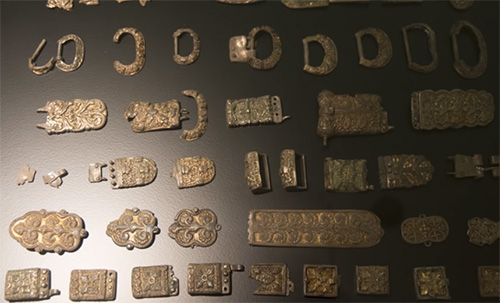
Kid’s clothing
The clothes that the children in the Viking Age wore was pretty much the same as for the adults. Both the clothing for boys and girls would reflect the parents’ style in both quality and fashion.
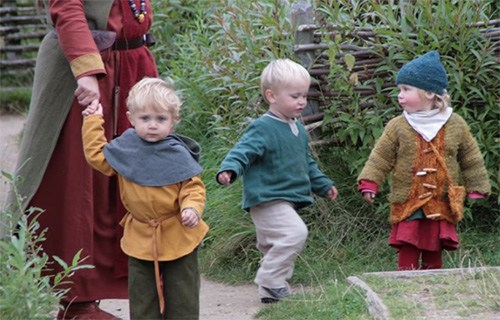
Today, most of us are familiar with clothes that is waterproof, and it might be a surprise for you but that is not a modern thing. The Vikings did also know how to make the clothes waterproof. Of course, it was not on the same level as nanotechnology but it still worked fine. The Vikings used skins of animals treated with beeswax, which made them soft, and then applied fish oil on them. That is how they became waterproof.
Viking jewelry
There's no doubt that the Vikings knew how to make beautiful jewelry. Just look at some of the jewelry that has been found from the excavations. The details on many of them are absolutely stunning.
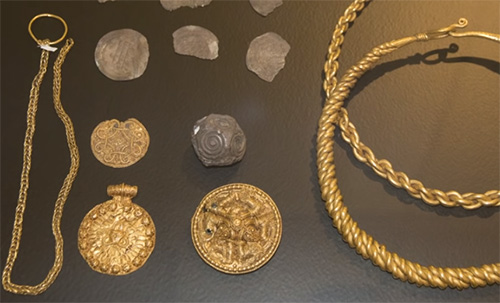
Men and women from all classes in the society wore jewelry. And they were not necessarily religious objects. Some were just ornaments, for instance, rings, arm rings, necklaces, and brooches. And depending on what kind of materials they were made from, that could even indicate the wealth of a person.
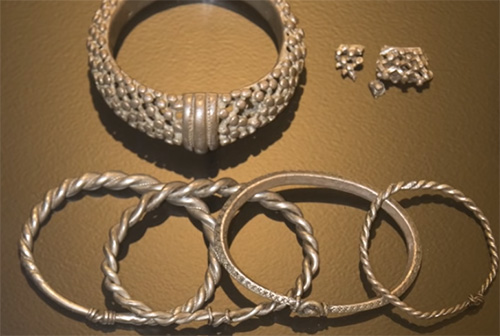
The people in the Viking society did not wear earrings. It was something they were familiar with and they probably encountered it on the many expeditions when they traveled around in Eastern Europe and came in contact with the Slovak people.
Some of the jewelry also had a practical function – for example, the brooches were used to fasten the cloaks on the clothes. Some of the pieces of jewelry had, of course, also a symbolic value, such as Thor's hammer which was made as a pendant for a necklace.
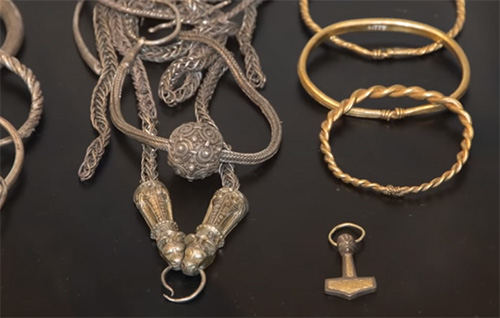
(c)


